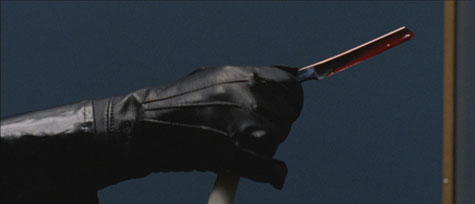
There are a few very general things in common between Italian giallo films and the pinky violence cinematic fare from Japan that I overviewed in a recent post.
See also: Pinky Violence
Both sets of movies were established in the 1960s and saw their finest releases come to the fore in the ‘70s. Both lines were created by experimental directors looking to break new ground in what can happen in a feature film. Sex and violence figure prominently in both, as does groovy music. The definitions for both genres are fairly loose and open to varied interpretations.
But that’s about where the likenesses stop. While the Japanese movies were exploitation fare looking to capture the ways of the country’s wild and reckless subversive youth (in particular tough bad girls), gialli are distinctly European crime thrillers that generally involve foul play among adults. Characters in pinky violence films get slapped, kicked, and knifed a lot, but relatively few of them die; in gialli, death (by savage murder, usually) is always coming just down the strada.
Giallo (Italian for “yellow”) films got dubbed as such because they are seen as the cinematic equivalent to the yellow-covered paperback crime novels released by the Italian publisher Mondadori. Some combination of these elements generally comes into play in giallo films: Hitchcockian suspense, slasher-film gore, acid jazz scores by leading soundtrack makers, experimental directorial work by cutting edge auteurs, beautiful people in chic clothing, stylized set designs, hallucinatory episodes, evil conspiracies to drive characters into despair and insanity, murder mysteries, police procedurals, hauntings, people drinking whiskey in tall, thin glasses…
Below is a list of what I see as some shining examples of giallo cinema. One quick preface leading into those: to share the love, I gave myself the rule of only including one title per director. Without that restriction, Dario Argento’s films probably would have made up about half of the list. Argento and the other directors are name-checked in the parentheses by the titles:
The Bird with the Crystal Plumage (Dario Argento, 1970)
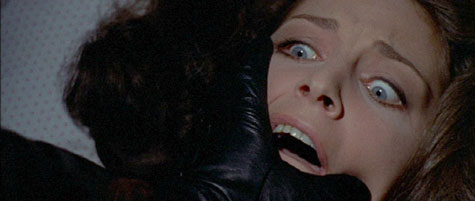
There are at least four Argento titles I would have been comfortable putting here, but I’ll go with the first full-length movie he directed. If someone who hadn’t seen gialli asked me for a first title to start with as an introduction, I would guide them to this one.
Tony Musante plays an American writer suffering from a creative funk while staying in Rome. Just as the scribe is ready to return to the States and see if he can get his spark back there, he happens upon a scene involving a bizarre and disturbing-looking attack on a woman in an art gallery. The assailant flees, and—as the writer was the only witness to the incident—the local police don’t want him going anywhere until they find the culprit and understand the reason for the assault.
Frustrated by his lack of free movement yet fascinated by the haunting scene he viewed, Musante’s character, with the help of his girlfriend (Suzy Kendall), performs an investigation of his own. Beautifully shot and full of sexual and violent tension, this is a masterwork and one of the very best examples of the genre. Ennio Morricone’s atmospheric score, particularly the title theme, is outstanding.
Hatchet for the Honeymoon (Mario Bava, 1970)
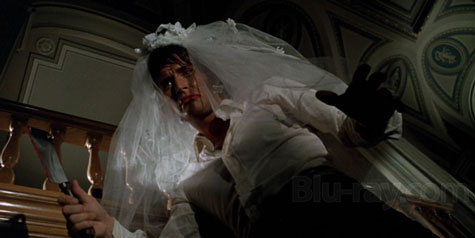
Some Bava buffs will likely take exception to me choosing this one over the director’s more celebrated gialli, such as Blood and Black Lace and A Bay of Blood. But, I have a soft spot for the quirky, trippy Hatchet.
The movie wins me in its first minutes, when its lead male character, played by Stephen Forsyth, announces in a voiceover, “My name in John Harrington. I am 30 years old. I am a paranoiac.”
Yep, the icily handsome Harrington is bent. He and his wife, who are unhappily married, run a Paris fashion center that specializes in bridal gowns and accessories. Harrington has a major hang-up involving brides: he likes to hack ladies with his hatchet on their wedding nights.
When Harrington gets haunted by his wife after he slays her and then becomes involved with a new female employee who isn’t intimidated by him as are most women, his already screwed brain gets twisted that much more. The film, which manages to be both genuinely scary and funny in a campy way, has lots of brain-bending hallucination scenes to go along with all the hatchet play.
Forbidden Photos of a Lady Above Suspicion (Luciano Ercoli, 1970)
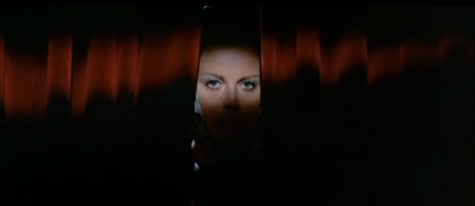
Dagmar Lassander plays a glamorous housewife whose world gets shaken when a strange, hostile man informs her that her businessman husband, to whom she is dedicated, is a murderer. The accuser appears able to prove his claim, and he starts blackmailing the woman into doing his bizarre bidding, otherwise he will turn her hubby over to the fuzz. As the woman is driven to the brink of madness and suicide by the escalating torments visited upon her by the man, it starts to look like there might be others besides that guy who are out to break her spirit.
The big pluses in this title are the gorgeous Lassander’s photogenic beauty (wrapped up in clothing that walks the line between stylish and garish), Morricone’s winning soundtrack, and some chilling suspense.
A Lizard in a Woman’s Skin (Lucio Fulci, 1971)

Set in London, this one opens with a dream sequence that’s like a mash up between Carnival of Souls and Vampyros Lesbos. And, the surreal intensity doesn’t let up much through its duration.
Florinda Bolkan stars as Carol, a sexually frustrated housewife who’s morbidly interested in her wild-living female neighbor, to the point where Carol has a series of violent and erotic dreams about the woman. Carol has a nightmare in which she stabs her neighbor to death, and soon after, the woman is actually killed by a stabbing and the murder weapon is a letter opener that belongs to Carol.
Carol is arrested and a trial is set, but she says she can’t remember doing the deed, her lawyer father believes her, and the police are dumbfounded by a lack of motive. Carol’s adulterous husband and her snide stepdaughter are looked at by the cops, as are a pack of acid-taking hippies who are clearly involved in the doings.
The movie has a tripped-out feel from beginning to end, and it includes a superb psychedelic Morricone soundtrack. Wild.
Short Night of Glass Dolls (Aldo Lado, 1971)
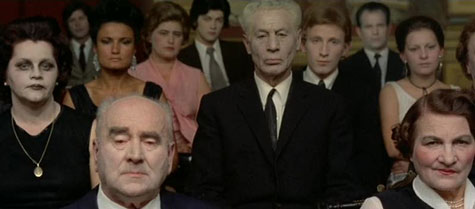
In Lado’s directorial debut, Jean Sorel plays an American journalist living in Prague. At the beginning of the story, he is found unconscious in a plaza. He’s brought to a hospital and pronounced dead. But, his body isn’t decomposing the way it should, and the medics are baffled. He seems to be a live man trapped in a dead body.
Meanwhile, in voiceovers, the journalist tells about the events that led to his current state. It started when his girlfriend (played by Barbara Bach) mysteriously disappeared. As the heartbroken, worried reporter looked into what happened to his beloved, he learned that a whole slew of young girls had similarly vanished in the city in recent times. The more he learned about all of these missing persons incidents, the more he saw that some sinister doings were at hand, and the more he realized he couldn’t trust anybody, including his journalistic colleagues.
Glass Dolls, which lacks the gory violence generally found in gialli, is a brainfuck suspense story involving occult dealings and alienation. Morricone lays down the sounds.
Amuck (Silvio Amado, 1972)
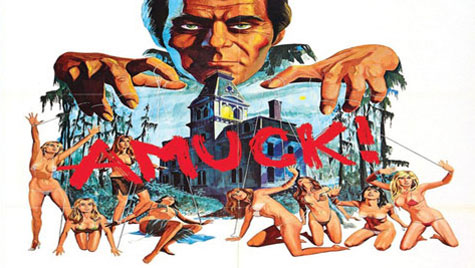
Hitchcock fans will likely recognize Farley Granger, the male lead of this one, from his roles in Rope and Strangers on a Train. Granger plays an ascot-wearing novelist in Venice, who dictates his stories to secretaries who type them up for him.
Giallo mainstay Barbara Bouchet plays a woman who gets the writer to hire her to be his new typist. What the author and his sultry wife (portrayed by Rosalba Neri) don’t know is that the new helping hand was a friend (of the romantic sort) of the last secretary, who has gone missing under suspicious circumstances, and the new girl is there to investigate what happened to the old one.
Granger is wooden in his acting in an enjoyably camp way, and Bouchet and Neri are both excellent and lovely. Another part of what gets this one on my list is the sublime soundtrack piece, “Piacere Sequence” by Teo Usuelli, which plays (on a slab of vinyl spinning on a groovy turntable, no less!) during a key, sexy and danger-filled scene.
The Red Queen Kills Seven Times (Emilio P. Miraglia, 1972)

A centuries-old legend states that a woman (the black queen) murdered her sister (the red queen) who’d been tormenting her all their lives, and that afterward, the red queen has risen from the dead every 100 years and gone on a killing rampage.
In the present, it’s 1972 and the red queen is due for a spree. The aforementioned Bouchet portrays a fashion photographer who recently accidentally killed her sister when the two were having a catfight. And now, people in Bouchet’s character’s vicinity are getting murdered and there are sightings of a woman in a red cape roaming around the area and freaking people out with her maniacal laugh.
Beautiful models flitting around in happening threads, a young Sybil Danning being sexy, a police detective who looks like Freddie Mercury, an ace score by composer Bruno Nicolai, and some outlandish gore…a giallo classic.
Torso (Sergio Martino, 1973)
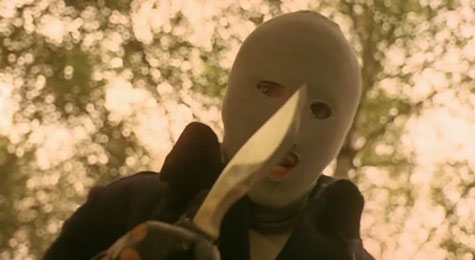
It’s summer session at a city university, and pretty female students are being strangled to death and then sliced up and gouged by a masked sicko. Suzy Kendall and Tina Aumont star as co-eds whose circle of friends and acquaintances make up the victims.
So, who’s the murderous sadist?
Is it the sullen creep who’s always hanging around the girls with his hangdog facial expression; the two motorcycle boys who got spurned by one of the victims when they tried to engage her in a three-way at a pot party; the freaky street vendor who likes to stoop down under his table and cop glances at girls’ legs? Could it even be the mild-mannered art professor on whom Kendall’s character has a crush, or Aumont’s character’s seemingly kindly uncle?
This is classic slasher film scare fare, with an unmistakable European flavor.
The Perfume of the Lady in Black (Francesco Barilli, 1974)
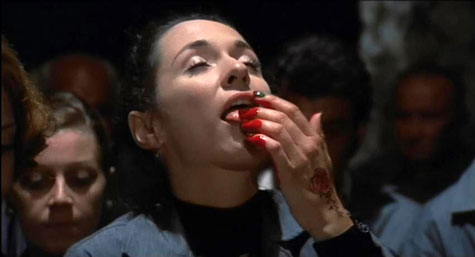
This is a title that lands on some giallo fans’ best-of-the-genre lists, while other aficionados question whether it should be considered as part of the group.
Mimsy Farmer plays an overworked scientist tormented by disturbing visions depicting scenes from her troubled childhood. She could use some help in coping with this trauma, but her boyfriend’s pretty indifferent and her best female friend leads her into interactions with spiritualists and witchcraft practitioners who only disturb her more.
The story is mesmerizing and filled with haunting visions and intricate puzzles. It is likely to find favor with admirers of Roman Polanski’s “apartment trilogy” paranoia freakout films Repulsion, Rosemary’s Baby, and The Tenant.
And, despite what the haters say, it is undeniably a giallo.
Spasmo (Umberto Lenzi, 1974)
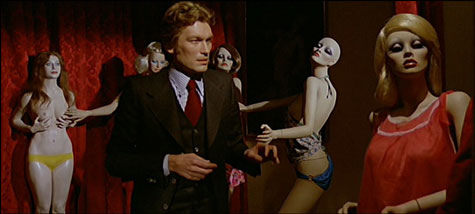
Robert Hoffman is Christian, a debonair fella who has an apparently chance, and definitely life-changing, encounter with an attractive and enigmatic blonde named Barbara, played by giallo hall-of-famer Suzy Kendall. Christian goes for Barbara and visits her in her motel room, despite the fact that he’s a got a girlfriend who is pregnant.
In the motel room, Christian is attacked by a gun-wielding man we’ve earlier seen walking around looking sinister while twirling metal balls in his hands. Christian nabs the dude’s gun and shoots him, apparently to death.
But later, when Christian returns to the scene of the battle, the weirdo’s body is gone. Christian and Barbara then go into a series of episodes during which, the more people who come into things, the more confusing it gets as to who the guy Christian shot is, why he attacked Christian, and whether he is alive or dead now.
There are so many plot twists and false leads that, after a while, the viewer might be inclined to give up on solving the mysteries involved and just enjoy the ride at face value. It’s a bizarre, hypnotic story that looks good and messes with your brain.
Brian Greene writes short stories, personal essays, and reviews and articles of/on books, music, and film. His work has appeared in 25+ publications since 2008. His pieces on crime fiction have also been published by Noir Originals, Crime Time, Paperback Parade, The Life Sentence, Stark House Press, and Mulholland Books. Brian lives in Durham, North Carolina.
His writing blog can be found at: http://briangreenewriter.blogspot.com. Follow Brian on Twitter @greenes_circles

I haven’t seen one of these films and now I want to see them all right now! Well-written, Brian.
I’m glad you enjoyed the post, David. Thanks. I hope you get a chance to watch some of the films. I don’t think they’d let you down.
Nice work and some truly great choices! I’d throw the following titles into the mix as they’re equally as essential:
Don’t Torture A Duckling (Lucio Fulci, 1972)
What Have You Done To Solange? (Massimo Dallamano, 1972)
The Strange Vice Of Mrs Wardh (Sergio Martino, 1971)
Who Saw Her Die (Aldo Lado, 1972)
What Have They Done To Your Daughters? (Massimo Dallamano, 1974)
Chris, thanks for the comment. I’m glad to hear you liked the article. I have seen a few of the titles you mentioned, and like them and would have included them if my list had been longer. The others, I will seek out!
We address every complaint at a moment’s notice. If the copy requires amendments, a free revision is offered. If the issue is serious and cannot be fixed, a refund is granted to the customer.
Want to thank you for this great post!!
I definitely enjoied every bit of it, I have you bookmarked to check out new stuff you post.
Meanwhile, check out this free classified ads site: anunturili.ro
It is truly a well-researched content and excellent wording. I got so engaged in this material that I couldn’t wait reading. I am impressed with your work and skill.
There are specific exposition sites through the internet to make sans risk obviously with their enlisted as a feature of your webpage.
I impressed, I must say. Actually hardly ever do I encounter a blog that each educative and entertaining, and let me let you know, you have got hit the nail on the head. Your concept is outstanding; the difficulty is something that not enough people are talking intelligently about. I am very glad that I stumbled across this in my search for something regarding this.
The white name crypto trade program offers a turnkey arrangement that engages businesses to form strong and secure exchanging stages. The computer program has been on the showcase for 10 a long time. Its made strides frontend and backend usefulness permits clients to appreciate a smooth exchanging encounter over a wide extend of cryptocurrencies.